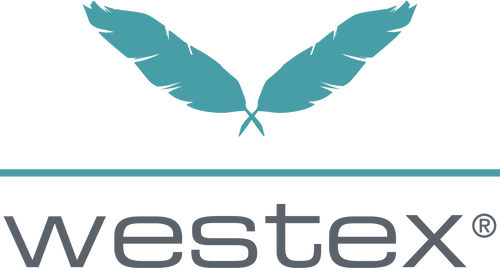A duvet is not just a duvet. What your duvet is filled with has a major impact on factors such as weight, warmth, and durability. For those looking to buy duvets for your store, the sheer number of options can be intimidating. Thankfully, we’re here to give you everything you need to know about comforter fill options, and can help you decide the best duvet filling for your customer’s bedrooms.
When it comes to duvet fill options, there are two main categories - Down and Down-Alternatives. Each of these two categories has many options within them. We’ll give a quick guide on what is involved in the most popular duvet fill options.
Down Duvet Options
“Down” refers to the soft layer of fluff found under the outer layer of feathers on birds. Down from geese and ducks are always popular duvet fill options, as the material is incredibly soft and airy.
This leads to duvets that are lightweight, and very good at keeping you at a comfortable temperature. It must be noted, however, that certain people may have allergic reactions to Down duvets. So, make sure to work with a Down duvet manufacturer that uses antimicrobial treatments.
If you are looking into Down duvet fill options, it’s good to know about the following:
Goose Down
Goose Down tends to be the most expensive, but also the most prestigious option. Geese are large birds that produce ample amounts of very soft Down. Many areas or communities, like the Hutterites, have become famous for their high-quality Goose Down. The thick Down clusters of geese are excellent for warm and cozy comforter fill options.
Duck Down
The other common bird used to collect duvet fill is the ducks. Since there are more ducks than geese in the world, they tend to be a more common Down fill option. While many say that Goose Down makes the best duvet filling, Duck Down is often more affordable.
Feather Fill
While the softer Down is the most popular option, some duvets use actual feathers to save cost. A duvet filled with feathers may have a “spiky” and uncomfortable feel to it. However, some comforters mix Down and feathers to help with warmth and provide loft.
Down-Alternative Options
If you believe that Down duvets aren’t the right fit for your brand’s customers, there are plenty of Down-Alternative duvet fill options available. There are tons of variations on these, but we’ll give information on some of the most well-known.
Wool
Wool is another slightly less common duvet fill option. Out of all the alternative options, it is probably the closest to Down. It’s good at keeping you warm without overheating and is about the same price. However, wool rarely can get the same “fluff” and lightness as Down. Like silk, customers have to be careful with over washing wool.
Cotton
Cotton can be considered a “lighter” version of wool in many ways. Like wool, it is hypoallergenic and breathable. Its lighter weight makes it ideal as a light comforter fill option, perfect for summer or warmer climates.
Bamboo
Not all organic duvet fill options are from animals. Bamboo is favoured by those who prefer not to use any animal products in their daily life. While bamboo-derived fill tends to be thinner, they are very durable and long-lasting, as well as very breathable.
Hollow Fibre
Synthetic fills are those made from non-natural sources. These synthetic materials are often popular duvet fill options due to being hypoallergenic (since they contain no organic parts), and for being durable.
Among all the synthetic options, hollow fibre is among the most popular. They can be machine washed quite regularly, though won’t last as many total years as down products.
Microfibre
Microfibre duvet fill is another form of synthetic duvet fill, similar to hollow fibre. Microfibre is designed to be as close a synthetic replacement for down as possible, having extra-fine fibres to try and give the same feel. This makes it among the lightest synthetic fills out there. This lets you get something close to the feeling of down, but hypoallergenic and at a cheaper price.
Microgel
Microgel duvet fills are also known as “polyester” fills. They tend to be among the most affordable hypoallergenic duvets, using a polyester microgel for their fill. However, this price reduction comes at a reduction in breathability. While lightweight, it’s not the best option for those who tend to sweat while they sleep.
How Do I Tell Which Duvet Fill Options to Stock?
Many customers can be very picky about what goes into their duvets and comforters. But how can a retailer decide between all of these different options? There’s no real right answer, but there are some general guidelines you can go with.
The most valuable duvet fillings are always going to be the Down ones and many consider these the best duvet filling. Both duck and goose Down are lightweight, excellent at keeping heat without overheating a sleeper, and incredibly fluffy and comfortable. When it comes to sleep quality, very little is better than down.
If you are already offering Down duvets and comforters, you can expand your stock by focusing on those consumers who prefer alternatives. There are a few reasons why consumers do this, but it often comes down to expense or wanting something without animal products involved.
If they still want a natural product, bamboo fill is always a great option. Among the synthetic choices, we’ve found that microgel is always a popular choice.

Back to Sleep Solutions Corner